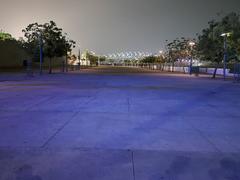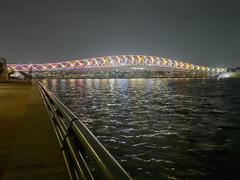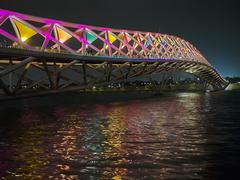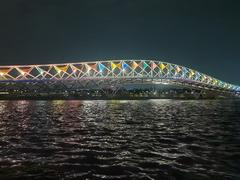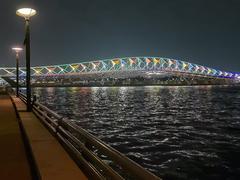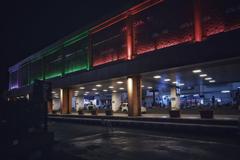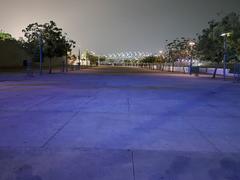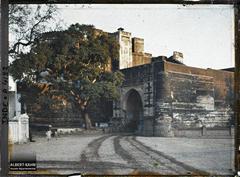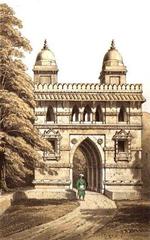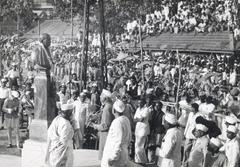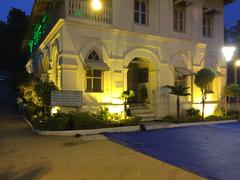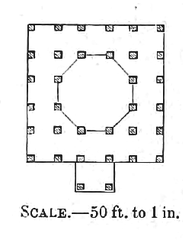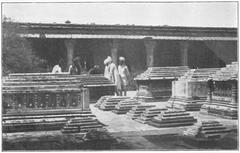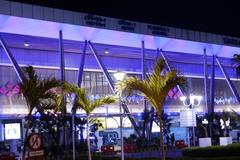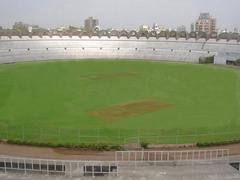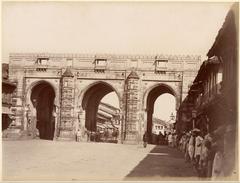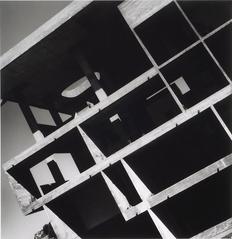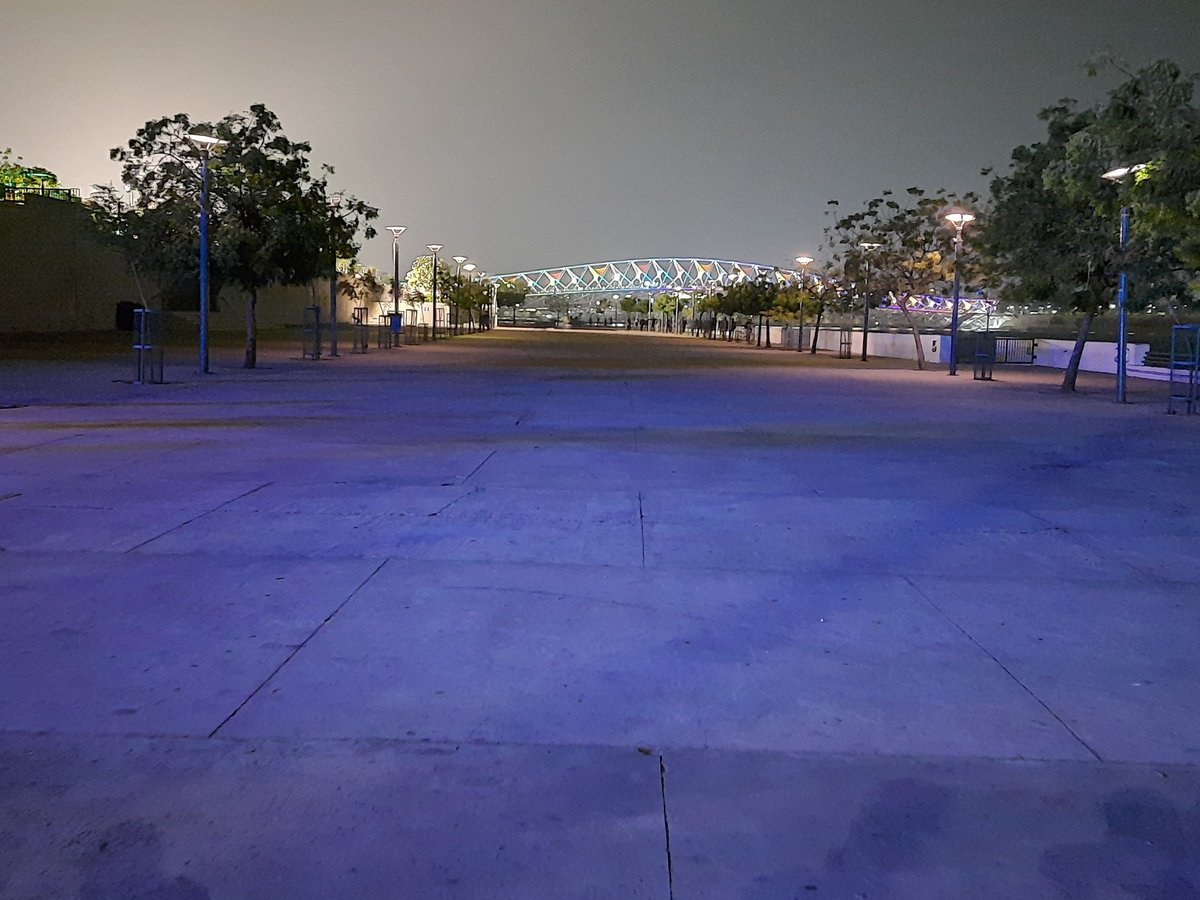
Visiting Riverfront Walkway: Hours, Tickets, and Tips
Date: 17/07/2024
Introduction
The Sabarmati Riverfront Walkway in Ahmedabad, India, is a modern marvel that harmoniously blends the city’s rich historical heritage with contemporary urban planning. This extensive urban project, initiated in the early 2000s, aims to revitalize the Sabarmati River, transforming it from a state of pollution and neglect into a vibrant public space that enhances the urban landscape and provides sustainable environmental benefits (Sabarmati Riverfront Development Corporation Limited). Historically, the Sabarmati River has been the lifeline of Ahmedabad, a city founded in 1411 by Sultan Ahmed Shah. The river has played a crucial role in the city’s development, serving as a hub for trade, transportation, and social gatherings. However, over time, the river became polluted and its significance dwindled. The Sabarmati Riverfront Development Project was designed to restore this historical connection by creating a space that honors the city’s heritage while catering to modern needs (Ahmedabad Municipal Corporation). The project has successfully addressed various environmental issues, such as pollution control and flood management, while providing numerous recreational and cultural amenities for residents and tourists. The walkway features beautifully landscaped gardens, promenades, parks, and various attractions that make it a must-visit destination in Ahmedabad (Economic Times).
Table of Contents
- Introduction
- History of the Riverfront Walkway, Ahmedabad
- Cultural and Social Impact
- Environmental Significance
- Economic Impact
- Visitor Information
- Future Prospects
- FAQ
- Conclusion
History of the Riverfront Walkway, Ahmedabad
Early History and Urban Development
Ahmedabad, founded in 1411 by Sultan Ahmed Shah, has always been a city of strategic importance due to its location on the banks of the Sabarmati River. The river has played a crucial role in the city’s development, serving as a source of water, a means of transportation, and a focal point for trade and commerce.
The Sabarmati River - Lifeline of Ahmedabad
The Sabarmati River, which flows through the heart of Ahmedabad, has been central to the city’s history and culture. Historically, the river was a bustling hub of activity, with ghats (riverfront steps) that served as places for social gatherings, religious rituals, and daily chores. However, over time, the river became polluted and neglected, leading to a decline in its significance and utility.
Vision for Revitalization
The idea to revitalize the Sabarmati Riverfront was first proposed in the 1960s, but it wasn’t until the early 2000s that the project gained momentum. The Sabarmati Riverfront Development Corporation Limited (SRFDCL) was established in 1997 to oversee the project, with the aim of transforming the neglected riverfront into a vibrant public space. The project was envisioned to address issues such as flooding, pollution, and urban sprawl, while also providing recreational and cultural amenities for the city’s residents.
Implementation and Challenges
The implementation of the Sabarmati Riverfront project faced numerous challenges, including land acquisition, resettlement of affected communities, and environmental concerns. Despite these hurdles, the project progressed steadily, with significant milestones achieved over the years. The construction involved reclaiming land from the riverbed, building retaining walls, and developing infrastructure such as promenades, parks, and recreational facilities.
Key Milestones
- 2005-2006: The initial phase of the project focused on land reclamation and construction of retaining walls to prevent flooding. This phase also included the development of basic infrastructure such as roads and utilities.
- 2012: The first phase of the Riverfront Walkway was inaugurated, featuring a 10.4 km stretch of promenades on both banks of the river. This phase also included the development of parks, gardens, and recreational facilities.
- 2014: The second phase of the project saw the completion of additional amenities such as boating facilities, amphitheaters, and event spaces. The riverfront became a popular destination for both locals and tourists, attracting thousands of visitors daily.
Cultural and Social Impact
The Riverfront Walkway has had a profound impact on the social and cultural fabric of Ahmedabad. It has become a symbol of the city’s transformation and a testament to the successful integration of urban planning and environmental sustainability. The walkway has provided a much-needed public space for recreation, social interaction, and cultural activities. It has also played a crucial role in promoting tourism, with events such as the International Kite Festival and the Sabarmati Marathon drawing visitors from around the world.
Environmental Significance
One of the key objectives of the Sabarmati Riverfront project was to address environmental issues such as pollution and flooding. The project has successfully achieved these goals through various measures, including:
Pollution Control
The construction of sewage treatment plants and the diversion of industrial effluents have significantly improved the water quality of the Sabarmati River. The riverfront now boasts clean and safe water, making it suitable for recreational activities such as boating and fishing.
Flood Management
The construction of retaining walls and the creation of floodplains have mitigated the risk of flooding, which was a major concern for the city. The riverfront now serves as a buffer zone, protecting the city from potential flood damage.
Economic Impact
The Riverfront Walkway has also had a positive impact on the local economy. The development of commercial spaces, restaurants, and recreational facilities has created numerous job opportunities and boosted the city’s economy. The riverfront has become a prime location for real estate development, attracting investments and contributing to the overall growth of Ahmedabad.
Visitor Information
Visiting Hours and Tickets
- Visiting Hours: The Sabarmati Riverfront Walkway is open daily from 6:00 AM to 10:00 PM.
- Tickets: Entry to the walkway is free, but certain attractions such as boating may have separate charges.
Accessibility
The Riverfront Walkway is accessible to people of all abilities, with ramps and pathways designed for easy navigation. Wheelchair access is available at various points along the walkway.
Travel Tips
- Best Time to Visit: The best time to visit the Sabarmati Riverfront Walkway is from October to March when the weather is pleasant.
- Nearby Attractions: Other historical sites in Ahmedabad worth visiting include the Sabarmati Ashram, Sidi Saiyyed Mosque, and Kankaria Lake.
- Special Events: Keep an eye out for special events such as the International Kite Festival and Sabarmati Marathon.
Photographic Spots
The Sabarmati Riverfront Walkway offers numerous picturesque spots perfect for photography, including the lush gardens, boating areas, and sunset views over the river.
Future Prospects
Ongoing Developments
The success of the Sabarmati Riverfront project has inspired similar initiatives in other cities across India. The project continues to evolve, with plans for further expansion and development. Future prospects include the creation of additional recreational facilities, cultural centers, and green spaces, ensuring that the riverfront remains a vibrant and dynamic part of Ahmedabad’s urban landscape.
Vision for Sustainability
The future vision for the Riverfront Walkway includes a strong emphasis on sustainability and environmental stewardship. Plans are in place to expand green spaces, implement advanced waste management systems, and promote the use of renewable energy sources. The goal is to create a model of sustainable urban development that can be replicated in other cities across India and beyond.
FAQ
- What are the Sabarmati Riverfront Walkway visiting hours?
- The walkway is open daily from 6:00 AM to 10:00 PM.
- Is there an entry fee for the Sabarmati Riverfront Walkway?
- Entry is free, but certain attractions like boating may have charges.
- What are some nearby attractions?
- Nearby attractions include the Sabarmati Ashram, Sidi Saiyyed Mosque, and Kankaria Lake.
- Are there special events at the Sabarmati Riverfront Walkway?
- Yes, events like the International Kite Festival and Sabarmati Marathon are held here.
- Is the walkway accessible to people with disabilities?
- Yes, the walkway is designed to be accessible to people of all abilities.
Conclusion
The Sabarmati Riverfront Walkway stands as a testament to Ahmedabad’s resilience and vision for sustainable urban development. From its early days as a bustling riverfront to its transformation into a modern public space, the Sabarmati Riverfront has played a crucial role in shaping the city’s identity. The walkway has provided a much-needed public space for recreation, social interaction, and cultural activities, promoting tourism and boosting the local economy. It has also addressed significant environmental issues, such as pollution and flooding, making it a model for urban revitalization projects across India and beyond. The ongoing and future developments aim to further enhance the riverfront’s appeal, ensuring that it remains a vibrant and dynamic part of Ahmedabad’s urban landscape. By combining historical significance with modern amenities, the Sabarmati Riverfront Walkway offers a unique and enriching experience for both locals and visitors (Times of India, Hindustan Times).
